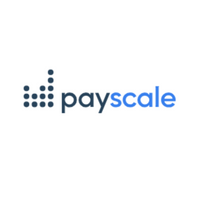Why the EU directive will mean pay is no longer a dirty word
The EU’s new Pay Transparency Directive has put wage equality and salary transparency under greater scrutiny. The directive’s stated purpose is to eliminate pay discrimination, promote equity, and provide a level playing field for all working professionals.
During Payscale’s recent Compference23, Ruth Thomas, Chief Evangelist at Payscale, talked to Michelle Gyimah, pay gaps consultant, and Rameez Kaleem, founder and director of 3R Strategy.
Primarily, the directive targets three potential stages of an employee’s career: pre-employment, during employment and any instances of pay discrimination. Crucially, organisations will soon be required to provide candidates with a defined salary range for their job role even before interview.
Don’t ask
Candidates will also have the right not to be asked by a prospective employer about current pay or pay history. Both these interventions are aimed at reducing chances of disadvantaging those who previously earned less.
The directive also goes a step further by establishing a clear framework for fair pay during employment. It mandates that employees may request salary information for a specific job category, ensuring prevalent pay scales are made transparent.
Furthermore, organisations will no longer be able to enforce confidentiality clauses in contracts, unshackling wage discussions from the binds of secrecy.
The directive also includes an extensive plan for victims of pay discrimination, from the establishment of legal rights to compensation prospects and a paradigm shift in litigation. The burden of proof and the responsibility for establishing a fair pay culture will lie with the organisation, magnifying its responsibilities while diminishing those of the victims.
Spurring organisational change
As discussed during the panel at Compference23, the introduction of such a directive prompts a pivotal shift in organisational dynamics, pushing employers to tackle income disparities and reposition their approach towards salary transparency. Employers will need to combat any reluctance to disclose salary information and foster a culture promoting fairness and openness.
Pay gaps consultant Michelle Gyimah said: “With issues around Black Lives Matter, the global pandemic, and the ways in which these have made us think about work very differently, add to that the recession that we’re going through and the impact that has on the job market — and what you have is a collision of societal issues.
“Add to that the pay legislation making its way through. The directive has taken a subject that once was very niche and something that maybe only a few people talked about at recruitment or promotion time and made it very, very visible.
“Now, pay transparency is being seen as a systemic issue that employers need to address — and I think it reflects the shift in the power dynamics between employees and employers, because now pay transparency is being seen as a really high employee value proposition.”
The intricacies of compliance
Compliance with the EU Directive presents an intriguing challenge, particularly for multinational organisations operating across multiple EU states. Ensuring adherence to the directive in every nation will increase jurisdictional risk due to possible multiple interpretations by each state in the EU.
Yet, the immense impact of the directive will propel organisations to home in on these issues, ultimately serving as a catalyst for broader societal change.
Despite the complexities, adopting a clearly defined pay philosophy, transparent salary determination processes and effective pay communication mechanisms can help counteract perceptions of unfairness. Viewing pay equality as an opportunity for talent attraction and retention provides an edge to increase competitiveness.
The directive highlights the role of legislation in shaping public opinion and expectations about fair treatment. However, organisations need to be mindful that transparency is not just about disclosing individual salaries, but about sharing organisational pay structures, ranges, and the rationale behind their determinations.
Notably, there has been an observed generational divergence on views towards pay transparency, with young professionals displaying greater comfort with open salary discussions.
Rameez Kaleem, founder and director of 3R Strategy, said: “Many organisations are reluctant to share this pay information with employees because leaders are nervous about everyone wanting a pay rise. They’re not sure how to communicate pay.
“And then we know that employees and candidates are really seeking transparency. A recent Gartner survey found that, last year, almost half of the candidates in the job market didn’t apply for jobs because there was no salary range given. For Gen Z employees, that number jumps to 80 or 85%.”
Cultural change needed
Despite its potential benefits, some organisations remain reluctant to adopt pay transparency. In these cases, a cultural change is needed to make sure that they are ready as and when each EU state makes the directive law.
As well as having systems in place that enable pay transparency, organisations need to consider employee readiness. Preparing and educating employees on communication etiquette and scenarios that could arise is just as monumental. Including discourse on pay fairness within the organisational culture can promote openness and fairness.
While the EU directive primarily targets EU organisations, the conversation surrounding equitable remuneration is global. The legislation’s intent resonates with all striving for a just, equal and open pay culture worldwide.
Whether an organisation is in the EU or not, this directive has widespread implications. Navigating the directive will be a learning curve, but a necessary one in the pursuit of corporate justice and equality.
To listen to the full conversation, sign up here to access the on-demand recording.
Supplied by REBA Associate Member, Payscale
At Payscale we provide technology solutions and services for companies to manage their compensation data/survey participation, job/grade pricing, compensation reviews and pay equity analysis.








